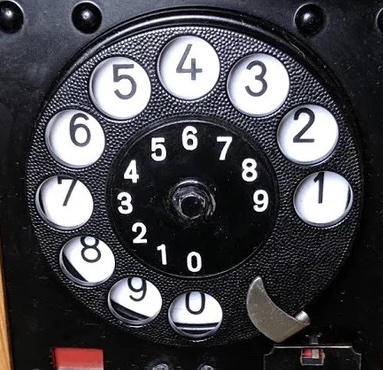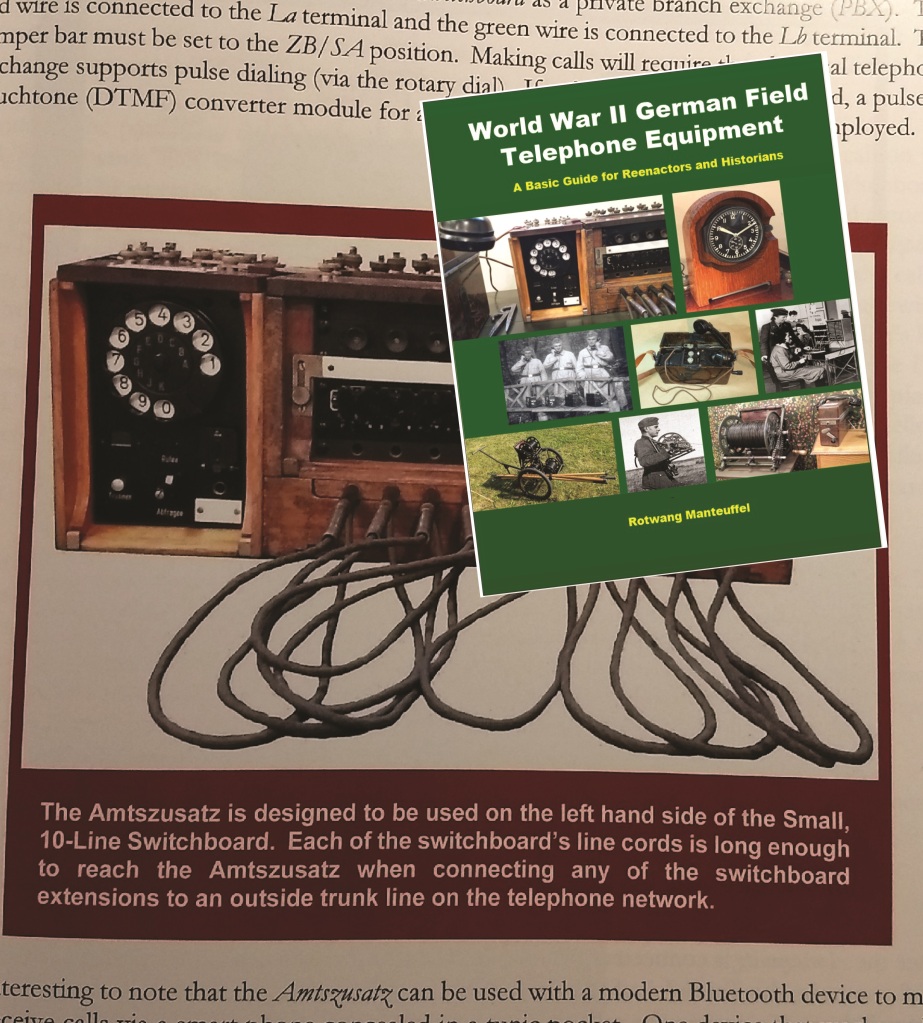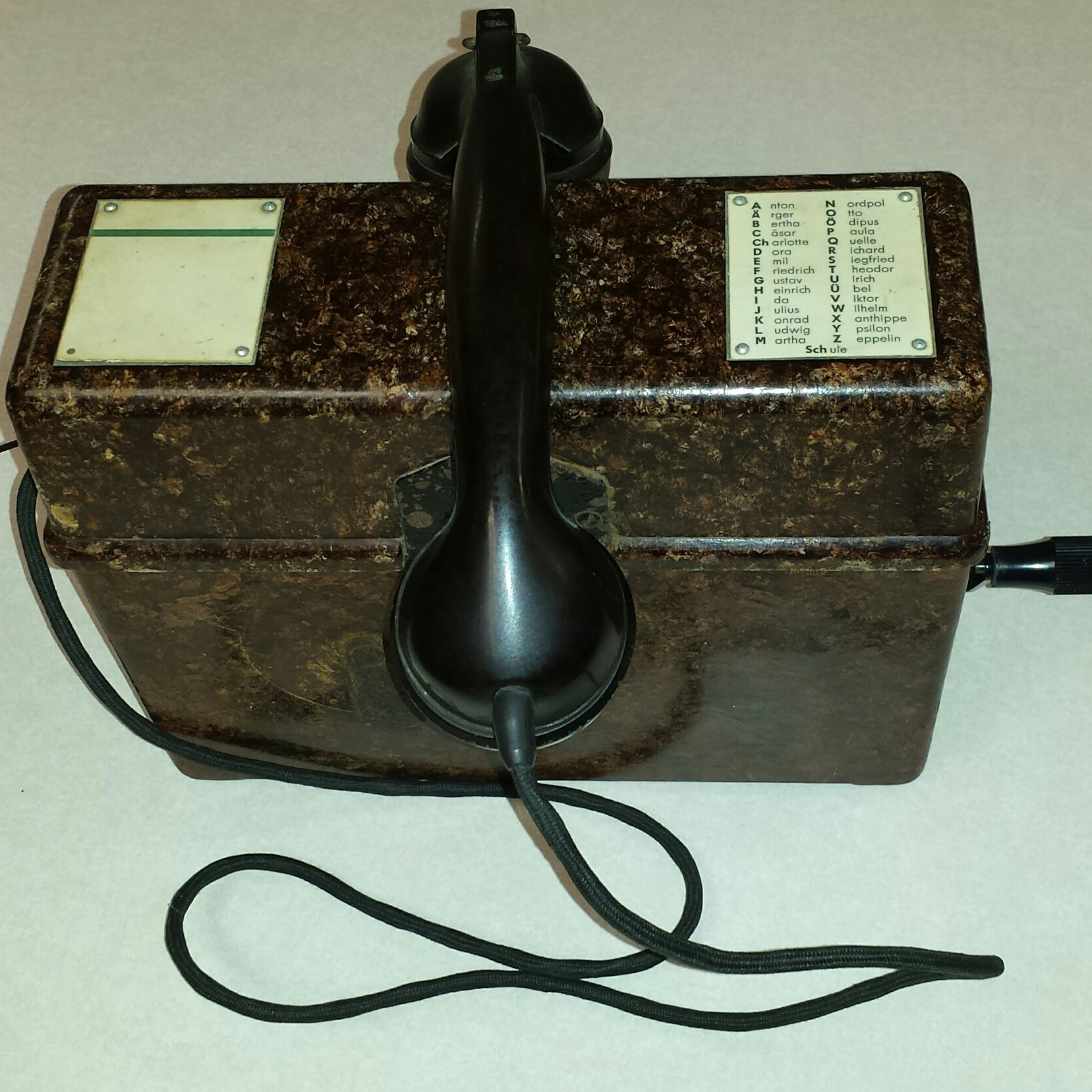The Amtszusatz is a rotary dial attachment for the small 10-line switchboard. It was connected to long distance telephone lines and their exchanges. The Amtszusatz enabled any of the OB field telephones on any of the switchboard’s 10-lines to make long distance calls on ZB dial-activated exchanges.

On the Amtszusatz, the rotary dial spins a switch cam N as shown in the schematic below. As the cam rotates, it opens and closes an electrical contact, creating pulses. Rotation is kept at a constant speed by a governor.


The pulses activate equipment (e.g. Strowger switches) in each exchange. These switches automatically connect the Amtszusatz to the desired line depending on the number of pulses received.
On the Amtszusatz rotary switch, 1 = 1 pulse, 2 = 2 pulses, 3 = 3 pulses, …, 0 = 10 pulses. This was pretty much standard throughout the world until most telephone systems stopped supporting pulse dialing after the turn of the 21st Century. Rotary dial telephones, including the Amtszusatz, can still be used on modern telephone systems if they are connected to a pulse-to-DTMF (touch tone) converter, such as Dialgizmo or X Link.
Although each Amtszusatz is of the same configuration, there are variations in their dials. In the first variant, the faces of the dials include the letters A through K (with the letter I omitted). This is because some telephone numbers included letters to make them easier to remember. Early dials had a bare metal finish, while later dials were painted black.


The second variant omits the letters from the dial’s face, and replaces them with numbers 1 through 0. These numbers are arranged in the same order as the numbers in the dial finger holes.

Confusingly, some dials have numbers on their faces, but they are arranged in different order to the ones in the dial finger holes… Except for 0. Interestingly, during WW2, Austria had dials like this. The rotary switch attached to the Amtszusatz’s dial, was assigned different numbers in Austria. In other words, 1 = 9 pulses, 2 = 8 pulses, … 9 = 1 pulse. 0 = 10 pulses.

In the last variant, numbers and letters are omitted entirely from the face of the dial.

What did German telephone numbers look like during WW2? Well, depending where the exchange was located in the country and conquered territories, the individual numbers could have two or more digits. Each exchange and connecting line was assigned a number, which also had variations in the number of digits.
To make a call from say, occupied Poland, the operator must first plot out the call on a map showing all the line numbers and exchange numbers. To make the call, the operator must dial all those numbers until he gets through to the final exchange.
For example, say it is 1940, and we wish to call Albert Speer in Berlin on our Amtszusatz. To access Berlin’s exchange, the operator must dial the correct area code number. He then dials 994376 to reach Speer’s phone.

For more information about WW2 German field telephones, check out my book: https://www.lulu.com/en/us/shop/rotwang-manteuffel/world-war-2-german-field-telephone-equipment-a-basic-guide-for-reenactors-and-historians/paperback/product-976w9q.html?page=1&pageSize=4

